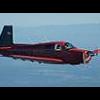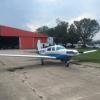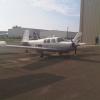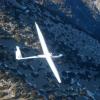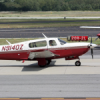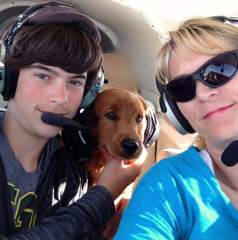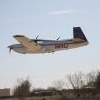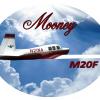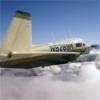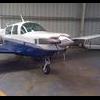Leaderboard
Popular Content
Showing content with the highest reputation on 06/17/2013 in all areas
-
OMG!! IF you can't handle doing stalls please don't even takeoff! That scares the crap out of me knowing someone is scared to fly an airplane to it's limits. If you know your airplane and get comfortable with stalls you will have good landings consistantly and you'll also be more comforable on shorter fields. Wooo.... now I'm worried!2 points
-
I'm Joe Minor who bought Zane's 68C and I just came across this post doing a search on Oxygen systems of all things. I've flown Zane's old plane about 20 hours now and am very happy with it for my first venture into general aviation and aircraft ownership, but I suppose that's off topic. With respect to the thread topic I can comment on exactly why I ended up buying 11N from Zane and his father. I'm a first time plane buyer, as I would guess many of the individuals buying a vintage are. I'd done a lot of internet research comparing similarly equipped aircraft with my minimum requirements (6-pack dash, IFR GPS, 1 axis autopilot, Engine monitor, <1500 SMOH) and contacted 4 or five sellers who were all in the same 45k-55k price range. Of the 5 I contacted requesting log book copies, 1 didn't respond at all, 2 said they didn't have scanned logbooks, and the other aircraft that send the logs had compressions in the mid 60's. Zane got me the complete scanned books and several dozen pictures within a day of my first email contact. Everything looked in order and in the course of the next week over a dozen emails we'd arranged a purchase contract and movement to a MSC near my location in Huntsville all while I was still in Afghanistan. More than anything it was the quick response to emails and honest answers to my questions. Not all of the answers were good news (Does the fuel take leak?, etc.), but the answers were all honest it helped build the trust between a seller and (especially a first time) buyer that is necessary for a major purchase. I was actually looking for a E or F and am sure I could have found one that was as good or even a better deal than 11N that I ended up buying, but I felt very comfortable buying 11N, even when it wasn't exactly what I was looking for because of the quick and honest email responses. Not to say that I'm not very happy with the plane, but I want to emphasis that I ended up buying something different than I was originally looking for based on good honest polite dealing by Zane and his father. Right now I'm mostly searching the forums as it seems most of my questions have been answered 2 or 3 times in the past. I'm sure I'll have some questions in the near future worthy of posting and hopefully as I gain some more GA experience can even chime in with opinions here and there v/r, joe minor2 points
-
Do you own a mooney? Have you stalled one or are you a piper owner like your name suggest. I'm not scared of stalling my bird, as long as the intent is to recover as soon as a wing starts to break. Now hold that yoke back for another second or 2 longer and you will be going for a he k of a ride. Ps I fly 300 hours a year for business, and know my bird like the back of my hand. I also have a healthy respect for avoiding DEEP stalls.1 point
-
Recently bled the brakes on my Mooney, after many years of ignoring this, the brakes were getting a little spongy and "not responding" well. 5606 Mil Spec fluid, given enough time, will turn into a thick, sticky, gum like fluid. This goober will most likely be located in the lower extremities of the brake system, calipers and lines, so you really don't want to initially use pressure to force this junk back into the master cylinders. So I first used the old "open the bleeder valve while helper pushes on brake pedal" method. Then while pedal is depressed, close bleeder and repeat - - just don't have the helper push pedal all the way to the bottom stop if possible, as it may get stuck fully down and require reaching in and manually pulling back. After doing the above until the tar like fluid stops coming out the bleeder, and making sure to keep the reservoir from going empty, then use a pressure pot to bleed the brakes normally from the bottom up, while moving the brake pedals some. I used a modified small garden sprayer for this. At the brake reservoir I screw in a 1/8" NPT nipple with clear line into a clear container to watch for bubbles - - that way there's no need to remove the reservoir or use an adapter on the line. bumper1 point
-
"... I've had 55 hours pilot training over the last few years (plus 12 hours in the last month doing serious "shake the rust off" ground training..." Be sure you don't fool yourself into thinking that ground training is going to shake the rust off. Some people who really *want* to become pilots are actually uncomfortable in the air, at the controls. So, they will often rush to buy an aircraft, thinking that will get them over the hump, so to speak, psychologically. But, that is putting the cart before the horse. They eventually learn that it is much safer and wiser to take their time, get their PPL in hand, fly several different types of airplane, and *then* buy. It is *very* easy to become seduced by the endorphin 'high' associated with plane shopping. But, much like seduction by a member of the opposite sex, a huge unseen 'low' can be waiting around the corner... Good luck. You're young - you've got plenty of time - and the tax deduction will still be there next year.1 point
-
I see a lot of threads about the market, and the best strategy to sell or buy a plane. I just finished selling our 1968 M20C, at $1k less than list price, and thought I would share my experience. It was a well-equipped, beautiful plane, but it had damage history (multiple gear-ups and prop strikes, along with a forced landing on a road in 1994 where the wings struck sign posts). It also had a 1300-hour, just past mid-time, engine. I did not use a broker. I took the time to put ads on Barnstormers, Controller, and Trade-A-Plane, along with Mooneyspace. I was concerned about the amount of my time it would consume; however, almost all the inquiries came through email, rather than telephone. I found that to be very manageable. I priced the plane aggressively. I made it stand out as the best deal on the market, by listing it well below the list price of the next comparable short-body Mooney with an IFR GPS, 4-cylinder engine monitor, standard 6-pack panel, a functioning autopilot, and nice paint and interior. It got a lot of attention. I probably received 2 or 3 inquiries per week. I saved a lot of time and effort by compiling all the photographs, specs, logs, etc and putting them into my Dropbox account (www.dropbox.com). I then had a standard email with links to download all the information. When I got an inquiry, I just pointed them at the info and said, "Let me know what your offer is." I had two very serious buyers who were told by multiple lenders that they could not get financing on a plane over 30 years old, or one with damage history, or one with a mid-time engine. They eventually walked away. The third serious buyer got it done. I don't think he's flown the plane yet, since the plane is still in the shop getting a fresh annual and having some minor issues fixed. I hope he enjoys the plane as much as I did. I hear he has joined the site, but I'll leave it up to him to introduce himself. One interesting fact - he was not concerned about the "damage history", because the aircraft he's been flying usually have multiple bullet holes in them. Any airplane that has not been shot up seems like an improvement. It took about 30 days to get the final signed contract, and another 30 days for inspection and closing the deal. Part of that delay was me finding a weekend to take it to his mechanic for the pre-purchase inspection. My take away? The market is still alive. You can sell your plane. Lots of people are out there looking at Mooneys. I watched the market for a long time before listing, and the ones that sit for years are sitting for a reason. I'm sad to see the plane go. I learned to fly instruments in it, and took my family a lot of places. But I think the new owner will take care of it.1 point
-
We are very happy to have passed 11N on to you, Joe. I don't think anybody ever starts out looking for a C model, but they're a great value, and a lot of bang for your buck in GA. If you ever decide to sell, look me up, I might want it back someday .1 point
-
1 point
-
The window trim is without a doubt the crappiest looking most cracked and faded part to a mooney. The sidewalls aren't that bad to begin with. 9 grand pays for ten hours refurbishing your old ones, and 110 hours of labor in the future to pull side panels and check for defects. Now how many me mechanics do this every year anyways.1 point
-
--The rub is, how do I buy a plane when I'm not going to be home for the rest of the year, who can do that for me? ....um, you don't. --How crazy am I? I wouldn't use the word crazy, but to give you the benefit of the doubt, I'll say very. Is it just me? ...+11 point
-
Sounds like fundamental building blocks for something you could really live to regret! First I am neither a mooney or tax expert. I do have a little experience with remote ownership. i would pretty much never recommend a expenditure for something that has a large risk of ongoing expense purely for tax purposes. Even 20-25k can quickly disappear if you buy the wrong plane (a pre-buy does not guarantee condition) Finding the right plane for you takes either time or a very flexible standard of what you want. I strongly recommend that you get a list of exactly what you have to have, and what you would like to have, and what you cannot tolerate in a plane. Then start looking. Take your time. You can buy a plane quickly. Selling a mistake takes years! Also, You really should have a workable plan for how to care and feed the plane while you are away. Otherwise you will spend all your time back getting it in flying order.1 point
-
1 point
-
You're comparing apples and oranges. When my son first got his drivers license, he borrowed my wife's car, a Kia Sephia, and thought it would be a good idea to join his buddies in their off road driving adventure. When he got it back and it spilled a puddle of oil on our driveway, I had to .. very calmly .. explain to him that the reason that the car now has a bent frame, cracked oil pan and damage on the sidewalls of the tires was because it was designed to be a passenger road car, not an offload vehicle. Oh sure, it drove the course, but it was the wrong tool for the job. Same thing with the iPad as a primary flight instrument. The G500 was designed using very rigorous software design and verification practices to provide a level of assurance that it will work reliably when needed. The iPad is an amazing device, and works great for playing games or doing simple office work, but it can and does do some strange things. It kicks me out from applications every blue moon, and sometimes it doesnt respond immediately when i push the application button. If a bug happens during a game, no big deal. I wouldn't want it for any life-critical applications though. Don't get me wrong .. I use my iPad in the cockpit for supplemental information all the time, but I always count on a more reliable primary source so all my eggs aren't in one basket.1 point
-
What is the purpose of practicing the full stall? Is it to hone and test aircraft handling skills, or is it to prepare you for that day when you accidentally find yourself in a full stall? Is it both? Many say that the Skyhawk and Warrior are no good for stall and spin training because they are too easy to recover and don't represent other types of aircraft one might encounter. It is suggested to get spin training in a Citabria. It seems to me that the Citabria is about as far away from a Mooney as I can imagine. If you become an expert at spin recovery in a Citabria, does that make you an expert at spin recovery in all aircraft and therefor no longer afraid of spins? Could this not give you a false sense of security that might embolden you to go where you shouldn't? I have to take the unpopular view and side with the FAA. Best to learn the signs of a stall and take action before the stall ever occurs. The fatality rate for piston single flying is much lower than it was in the good ol' days when spins were required for the PPL. We must be doing something right. In the Mooney, I say do a full stall one time with a qualified Mooney instructor just to see what it's like and what your airplane does. After that, practicing approach to stall to the point of buffet is good enough. If you miss the stall warning horn and you miss the shaking buffet and you don't notice your extreme nose up attitude and you don't notice the mushy controls, I'm pretty sure you're not going to notice the ball not centered. Focus on what happens before the stall, not after. Not that many stalls that actually killed people happened at 6,000 ft, nor did they predictably drop straight forward with a potentialy easy recovery.1 point
-
Dear Mooney Aviation Company: If you have enough money to sue someone would you happen to have enough working capital to develop an STC for the TD-300 turbo diesel replacement for my M20K 231? I’m sure the J owners would be interested as well. I would opine this endeavor would net a better return on investment considering the cost of litigation these days. Thank you1 point
-
….but if I chose to put on a $2000 dollar roof on my house, it’s my choice and I live with the consequences. I really don't want a rule or a piece of legislation to protect me from myself. I’m an adult and I would like to be responsible for myself. Therefore, if Jethro shows up outside my hanger, I would like to be able to make up my own mind if I want to pay for his service or not. I have my own A and P, which I trust and have used for years. Trust is a great thing and remember, I am ultimately responsible for the airworthiness of my aircraft. As a favor to me, he travels to my hanger to do my annual. Given your scenario I guess I can't use him anymore and I have to use the local guy on the field who has never seen a Mooney before in his life.1 point
-
Mooney is a private corporation that has gone through chapter 11 bankruptcy reoganization in the past and has changed it's name and logo in the past as a result. It has been many decades since Mooney ever made a fixed gear airplane, so because Mooney hasn't made a primary trainer aircraft most everyone has learned to fly in the aircraft of the competition. Unlike Cessna, Piper and Beechcraft, Mooney has always been a low volume small-time player relying on a single core model with a few improvements along the way, selling various reincarnations of the same model. Some models have had different engines than others and a few models have been stretched from time to time, but mostly the whole line has grown out of the M-20 model. Good luck with your assignment. I'm sure you don't need us to tell you the rules of proper scholastic research.1 point
-
I do believe he asked the armchair critics for their opinions.............and the armchair critics are responding! Just sayin'1 point

